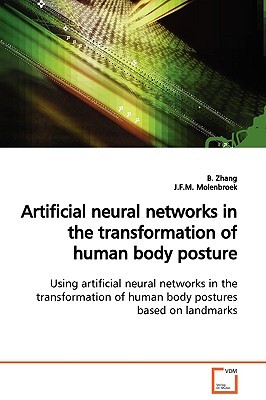
- We will send in 10–14 business days.
- Author: B Zhang
- Publisher: VDM Verlag
- ISBN-10: 3639102142
- ISBN-13: 9783639102147
- Format: 15.2 x 22.9 x 1.1 cm, softcover
- Language: English
- SAVE -10% with code: EXTRA
Artificial neural networks in the transformation of human body posture Using artificial neural networks in the transformation of human body postures based on landmarks (e-book) (used book) | bookbook.eu
Reviews
Description
Designers, engineers and ergonomists are seeking to exploit the opportunities offered by the 3D anthropometric technologies. These technologies make 3D measurements possible and provide us with a more detailed description of human body in comparison with the traditional 1D or 2D data processing. In many industrial design cases, there is a need to take into consideration various postures of the human body when the product is designed. This book presents an approach to transforming measured body data between various postures. In this research the measured human body data were substituted by a proper set of landmarks which was used as a basis of transforming the specific body postures. Artificial neural networks have been used for the actual conversion of data. The input consisted of a set of demographic data and the set of coordinates of the landmarks characterizing a given posture. The output was another set of landmarks describing the transformed posture. The results have showed that the ANNs and landmark-based posture prediction technology is computationally effective. This technology is generally applicable and opens up new possibilities in studying motions and hand postures.
EXTRA 10 % discount with code: EXTRA
The promotion ends in 19d.10:29:58
The discount code is valid when purchasing from 10 €. Discounts do not stack.
- Author: B Zhang
- Publisher: VDM Verlag
- ISBN-10: 3639102142
- ISBN-13: 9783639102147
- Format: 15.2 x 22.9 x 1.1 cm, softcover
- Language: English English
Designers, engineers and ergonomists are seeking to exploit the opportunities offered by the 3D anthropometric technologies. These technologies make 3D measurements possible and provide us with a more detailed description of human body in comparison with the traditional 1D or 2D data processing. In many industrial design cases, there is a need to take into consideration various postures of the human body when the product is designed. This book presents an approach to transforming measured body data between various postures. In this research the measured human body data were substituted by a proper set of landmarks which was used as a basis of transforming the specific body postures. Artificial neural networks have been used for the actual conversion of data. The input consisted of a set of demographic data and the set of coordinates of the landmarks characterizing a given posture. The output was another set of landmarks describing the transformed posture. The results have showed that the ANNs and landmark-based posture prediction technology is computationally effective. This technology is generally applicable and opens up new possibilities in studying motions and hand postures.


Reviews